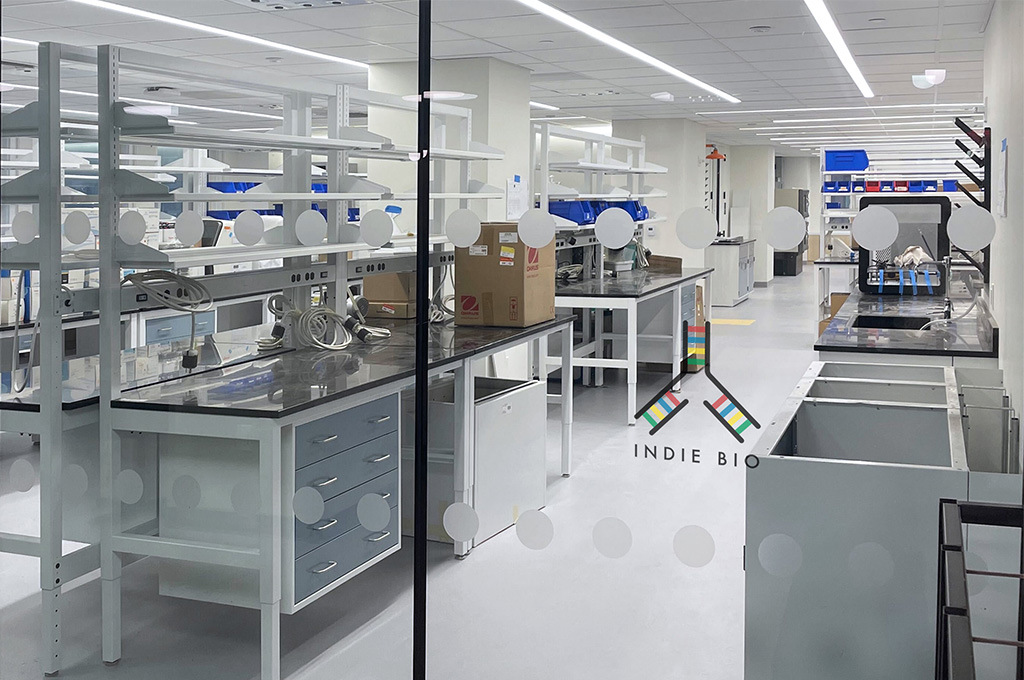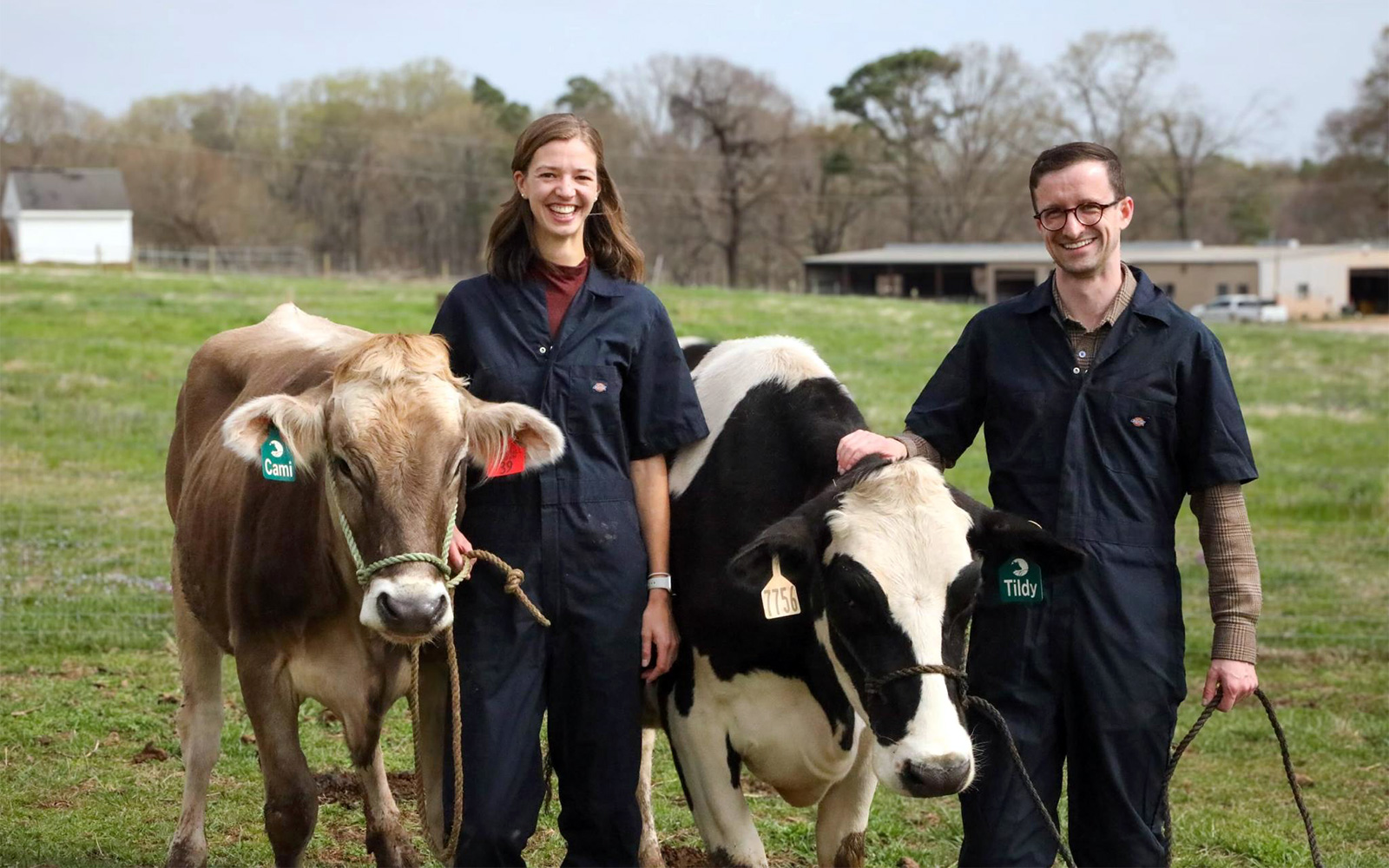At IndieBio, our perspective on gut bacteria is informed not just by the companies we’ve invested in that do human microbiome science, but by all the companies in our portfolio who work with bacteria and biomes in diverse sectors from the Future of Food to the Future of Energy to Biomaterials to Agriculture.
Early Popularization
A decade ago, the microbiome was a novel curiosity. The public learned that there was anywhere from 3 to 5 pounds of bacteria inside our bodies. Each was around one or two microns long — a tenth the size of cells. The number of them was astounding: estimated at 100 trillion. Exactly how they survived inside our bodies, without being attacked by our immune system, was unknown. Western diets (and overly-sanitary conditions) were eliminating our gut diversity; westerners had lost a third of their microbiome diversity, and flora diversity was correlated with health — across all animals, and all conditions. Probiotic drinks showed up on every store shelf, and soon after came the prebiotic supplements that gut bacteria feed on — oligosaccharides, fructans, and galactans.
A New Metaphor Emerges
Society grew to appreciate how the microbiome was important to health. Early research showed the gut was the source of 90% of our serotonin, and 60% of our oxytocin. That state of your gut was directly connected to the state of your mind. For awhile, the gut was often characterized as our “second brain.”
It’s time to upgrade that metaphor. Yes, the biome acts on our brain — but it acts on just about every other part of our body, too. The microbiome is more like a drug factory. It’s the “invisible organ” of the body that interacts with 70% of our immune system, generating our circadian rhythms, and turning our genes on and off.
When we say “drugs,” we’re using the term a little loosely to make the point. They’re naturally made. And in many species of bacteria, their output might not be quite a drug, but it’s a bioactive compound that acts on a pathway elsewhere in the body, either as a primary metabolite or a secondary metabolite. In this sense, the line between a drug and a bioactive compound is virtually indistinguishable, as the definition of a drug is anything with physiological effects. Traditionally, what we meant by “drugs” was that they were made outside the body and then put into the body. Arguably, most of this definition holds, as the bacteria are not of our body, even if they are inside it.
The Drug Factory’s “Top Sellers”
To list all the drugs made by bacteria in our bodies would take far too long. But here’s a short, starter list — solely for the purpose of illustrating the point that the microbiome has widespread impact on the body, for both better and worse:
- Histamines, both pro and anti-inflammatories
- Beta-glucuronidase / hormones / estrogen & estrogen cancers
- Short-chain fatty-acids / histone chrotonylation / HDAC2 / gene regulation
- 5-HT biosynthesis / Enterochromaffin cells / Serotonin, brain neurotransmitter
- Chylomicrons / energy-rich triacylglycerol
- Tyramine / blood pressure & hypertension
- Microcins that block salmonella
- Oxalate / protein transporter SLC26A6 / prevents kidney stones
- Zonulin / haptoglobin 2 / atherosclerosis
- Glutamate & cytokines / Vagus nerve / Oxytocin
- Tryptophan & tryptophan antibiotics
- Glucagon Peptide 2 / GLP2R / bone and neuroprotection
- Butyrate / Insulin Sensitivity / Diabetes & Obesity
- Deoxycholate / fat reduction
- A-tocopherol / Vitamin E / free radical scavengers
- G-aminobutyric acid / neurotransmitter / muscle tone
- Cholate / FXR transcription factor / antimicrobial peptides
- P-aminobenzoate / Folate / blood cell creation
- Eicosatetraenoic acid / Endocannabinoids anandamide and 2-AG
- Commendamide / GPR132/G2A / prevents autoimmune disease
All of the above are from the gut, but the gut isn’t the only place we have bacteria. A skin bacteria, staphylococcus epidermis, fights skin cancers — producing 6-HAP, which inhibits melanoma and lymphoma tumor cells.
Other Mechanisms of Action
Making drugs outright is only one way the bacteria in our gut do their work. Another way is that they chop free bioactive peptides or small molecules from longer chain proteins. A lot of what we eat is digested by hydrochloric acid and protease actions into basic building blocks. But food proteins also contain certain biochemical strings that, if chopped correctly, are then biologically active.
The microbiome also interferes with medical drugs. 80% of our current medical drugs are metabolized in the liver, but 20% of the drugs on the market are metabolized by gut bacteria. Since some people have different flora than others, these drugs tend not to work as intended for certain people. For instance, the emerging market of Anti-PD-1 checkpoint blockade immunotherapy has only a 10% success rate. It’s still a matter of debate just how to get that rate up, but many of the solutions being researched involve first transplanting necessary microbiota into the patient. About 50 medical drugs are now understood to be codependent on gut bacteria populations.
The Birth of Microbiome Therapeutics
The race to translate this research into commercial therapies is well under way. There are at least 6 drugs in development to treat cancers, from solid tumors to mucositis, with one candidate already in Phase II. There are three drugs in development for obesity, and five in development for diabetes, with one at Phase II. Fourteen drugs are being developed for Crohn’s and ulcerative colitis, with one of each at Phase II. There are drugs for lactose intolerance, for dental caries, for repeated urinary tract infections, for celiac disease, and several skin diseases, with one in Phase III for acne. Revenue out of this market is expected to begin in 2021 and reach $10 billion by 2024, continuing to go up steadily in the decade beyond.
We view the acceleration of this pipeline as proof of its market potential, but not necessarily as evidence that science has strong command and control over gut bacteria and all they interact with.
Finely-Tuned Control (and Effects)
To gain precise command over the drug factory, a variety of tools and competencies are needed. Science teams with these expertises are what IndieBio looks for and what drives our investments.
- Daily Fluctuation Tracking. Most microbiome research today uses single-shot samples of patients’ stool samples. But disease states tend to correlate with dramatic, short-term swings in the species population. For researchers to model these correlations, they desperately need a low-cost assay to track population swings. When such a tool is available, we believe it will be widely used — by all manner of researchers, even those who don’t currently factor in microbiome effects. It will also become a common biomarker in clinical trials, and then be required as a companion with microbiome therapeutics.
- Personalization. Because everybody’s microbiome is unique, and because the bacteria interact with each other, off-the-shelf probiotics are likely to work for some people, and not for others — or, to avoid undesired side effects, they have to be dosed at numbers that are too low to have much impact at all. Companies that built trust with consumers making personalized probiotic services will be able to grow into more and more effective blends.
- Setting You Up for Life. An infant’s microbiome fluctuates continuously in the first three years, but then largely stabilizes (with the exceptions around the disease-states described here, when health and the microbiome both swing together). There are two significant opportunities in this space. First, how to help an infant’s microbiome, from the first weeks to the first years, and second, how to optimize the biome around that stabilization transition —for a lifelong impact. In the US today, 32% of babies are born by caesarian section,
- Shared Metabolites. Bacteria by themselves are not the same as bacteria in a biome. A biome is an ecosystem; the bacteria interact, regulate each other, and the metabolites from some bacteria become the feed for others, in a chain reaction. For this reason, transplanting and colonizing individual strains is often ineffective. It’s not enough to formulate a strain in a synbiotic that combines the probiotic with a prebiotic — as soon as that hits the gut, other bacteria may suppress it. Companies that have worked out the interactions within a consortia of bacteria have a much better technology platform.
- Variants Within a Species. Most news about microbiome-health correlations is based on research looking at relative species populations. People with more of strain X have less of health condition Y, and so forth. But there is still a great deal of genetic variation within a species. Think about all the humans on the planet for a moment — we are all one species, but our DNA (and our health) varies meaningfully. Some of the best microbiome research investigates these differences; cohorts of people with the same species, but some have variants of that species — and dramatically different health functions as a result.
- Precision editing. Rational design of the bacteria genome is seemingly inevitable. Researchers today are busy editing microbiota as a way of understanding what the edits do — attacking it node by node. The challenge this path faces is that bacteria have ways of sharing their DNA, so precision edits could spread around a microbiome in unintended ways. One approach at a solution is to make the edits in the bacterium chromosome, not in the plasmid. But this has had mixed results.
- Culturing the Unculturable. 99% of the bacteria found in the wild have been unculturable in the lab; they grow in unusual conditions. A less extreme version of this occurs in the human gut, where some bacteria that have been identified as beneficial have unconventional properties and are particularly hard to colonize. Researchers who have developed expertise in culturing them have an advantage over researchers who’ve merely identified them.
At IndieBio, we are always looking for the next great microbiome company. We don’t just invest in startups — we help create them, often working with post-docs and principal investigators to build a team and transform them into scientist-entrepreneurs. To learn more, visit https://indiebio.co/
Further Reading:

https://www.cell.com/neuron/pdf/S0896-6273(19)30117-5.pdfDiscovery of genetic variants that protect against obesity and type 2 diabetes could lead to new…
Around four million people in the UK carry genetic variants that protect them from obesity, type 2 diabetes and heart…www.cam.ac.ukThe Gut-Hormone Connection: How Gut Microbes Influence Estrogen Levels | Kresser Institute
Emerging research indicates that the gut microbiome plays a central role in the regulation of estrogen levels within…kresserinstitute.com

https://www.cell.com/cell-host-microbe/pdf/S1931-3128(18)30267-1.pdfGenetically modified bacteria enlisted in fight against disease
People often take medicines to rid themselves of problem bacteria. Now, a counterintuitive approach – turning…www.nature.comProfiling the gut microbes passed from mother to baby
How an infant is born (by vaginal or cesarean delivery) and what she eats after birth (breast milk or formula)…www.broadinstitute.orgCan Your Microbiome Be Genetically Engineered to Make You Healthy? | Simons Foundation
Some people just know what they want from an early age. “I asked my parents for a microscope at age 6. I don’t have a…www.simonsfoundation.orgThe Role of Microbiome in Insomnia, Circadian Disturbance and Depression
Good sleep and mood are important for health and for keeping active. Numerous studies have suggested that the incidence…www.ncbi.nlm.nih.govBifidobacteria and Butyrate-Producing Colon Bacteria: Importance and Strategies for Their…
General Another strategy to increase bifidobacteria and butyrate-producing bacteria in the human colon is through the…www.ncbi.nlm.nih.govLactate-Utilizing Bacteria, Isolated from Human Feces, That Produce Butyrate as a Major…
The microbial community of the human colon contains many bacteria that produce lactic acid, but lactate is normally…aem.asm.orgMechanisms Linking the Gut Microbiome and Glucose Metabolism
The microbiome is an integral part of the human body with the highest density of bacteria in the gut, ranging from 1 ×…academic.oup.comGut microbiota, cannabinoid system and neuroimmune interactions: New perspectives in multiple…
Biochem Pharmacol. 2018 Nov;157:51-66. doi: 10.1016/j.bcp.2018.08.037. Epub 2018 Aug 30. Reviewwww.ncbi.nlm.nih.govGut microbiome modulates response to anti-PD-1 immunotherapy in melanoma patients
Resident gut bacteria can affect patient responses to cancer immunotherapy (see the Perspective by Jobin). Routy et al…science.sciencemag.orgInteractions between Bacteria and Bile Salts in the Gastrointestinal and Hepatobiliary Tracts
Bile salts and bacteria have intricate relationships. The composition of the intestinal pool of bile salts is shaped by…www.ncbi.nlm.nih.govZonulin Regulates Intestinal Permeability and Facilitates Enteric Bacteria Permeation in Coronary…
Several studies have reported an association between enteric bacteria and atherosclerosis. Bacterial 16S ribosomal RNA…www.nature.comIndigenous Bacteria from the Gut Microbiota Regulate Host Serotonin Biosynthesis
Yano, Jessica M. and Yu, Kristie and Donaldson, Gregory P. and Shastri, Gauri G. and Ann, Phoebe and Ma, Liang and…authors.library.caltech.edu



